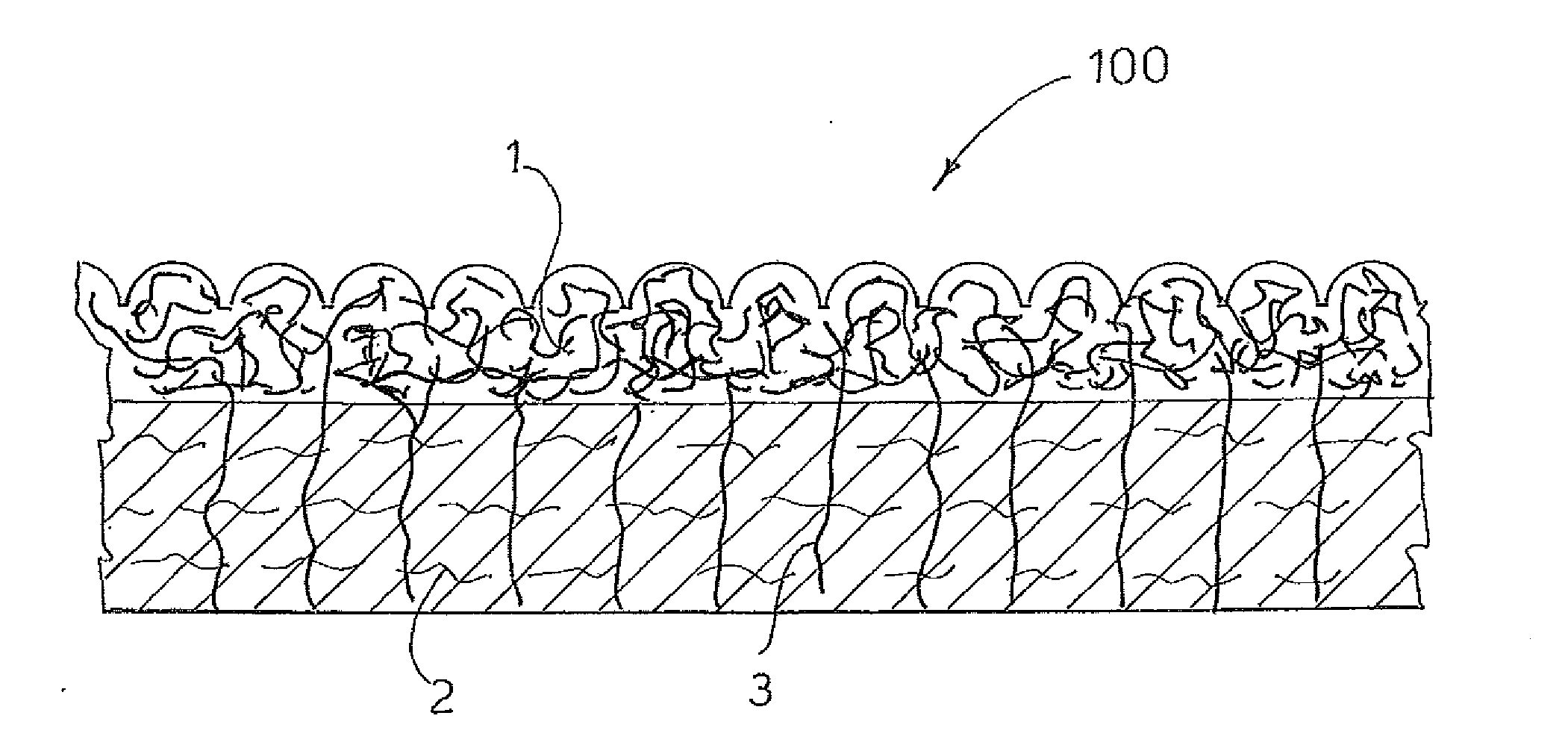Process for preparing a non-woven fabric having a surface covered with microfiber and fabric obtainable with said process
- Summary
- Abstract
- Description
- Claims
- Application Information
AI Technical Summary
Benefits of technology
Problems solved by technology
Method used
Image
Examples
Embodiment Construction
[0017]The term “bonded material”100, illustrated in FIG. 2, is intended herein to identify a material composed of two superimposed layers 1 and 2 formed by different fibers that have been subjected to processing through which they have been mutually bonded. The mechanical needle-punching step (a) is carried out according to prior art.
[0018]The treatment with high pressure water jets used in step (b) of the present process is a technology known in the art also called spunlacing or hydroentangling. See for example U.S. Pat. No. 3,485,706, or the description of patent application EP 1359241 incorporated herein by reference.
[0019]The non-woven fabric 100 is prepared according to the following procedure: the fibres constituting the supporting layer 2, having deniers greater than 1 dtex (illustrated with a light line), are fed on a conveyor belt from a first carding system. The fibers of said supporting layer 2 are then bonded, for example with water jets or mechanical needle-punching, as...
PUM
| Property | Measurement | Unit |
|---|---|---|
| Fraction | aaaaa | aaaaa |
| Fraction | aaaaa | aaaaa |
| Fraction | aaaaa | aaaaa |
Abstract
Description
Claims
Application Information
 Login to View More
Login to View More - R&D
- Intellectual Property
- Life Sciences
- Materials
- Tech Scout
- Unparalleled Data Quality
- Higher Quality Content
- 60% Fewer Hallucinations
Browse by: Latest US Patents, China's latest patents, Technical Efficacy Thesaurus, Application Domain, Technology Topic, Popular Technical Reports.
© 2025 PatSnap. All rights reserved.Legal|Privacy policy|Modern Slavery Act Transparency Statement|Sitemap|About US| Contact US: help@patsnap.com


